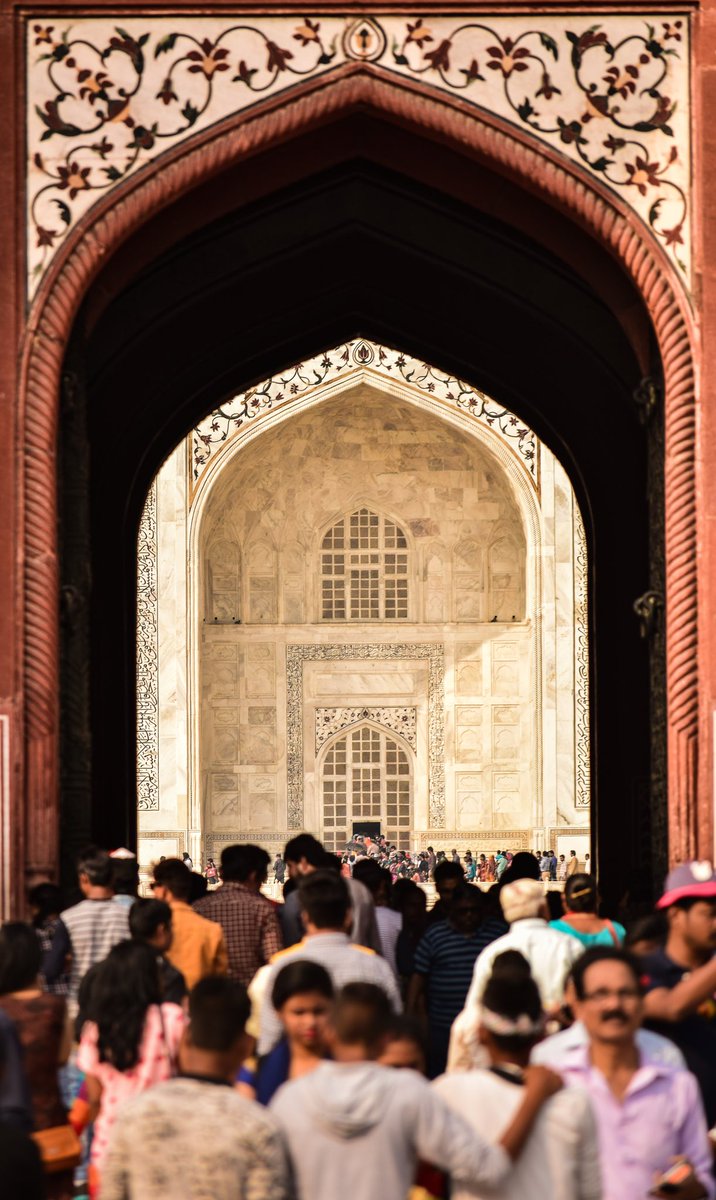The Taj Mahal, one of the New 7 Wonders of the World is in Agra, India. A symbol of love, it was commissioned in 1632 by the Mughal emperor Shah Jahan to house the tomb of his favourite wife, Mumtaz Mahal, as well as his own tomb too.
A thread on the artistry of the #TajMahal…
A thread on the artistry of the #TajMahal…
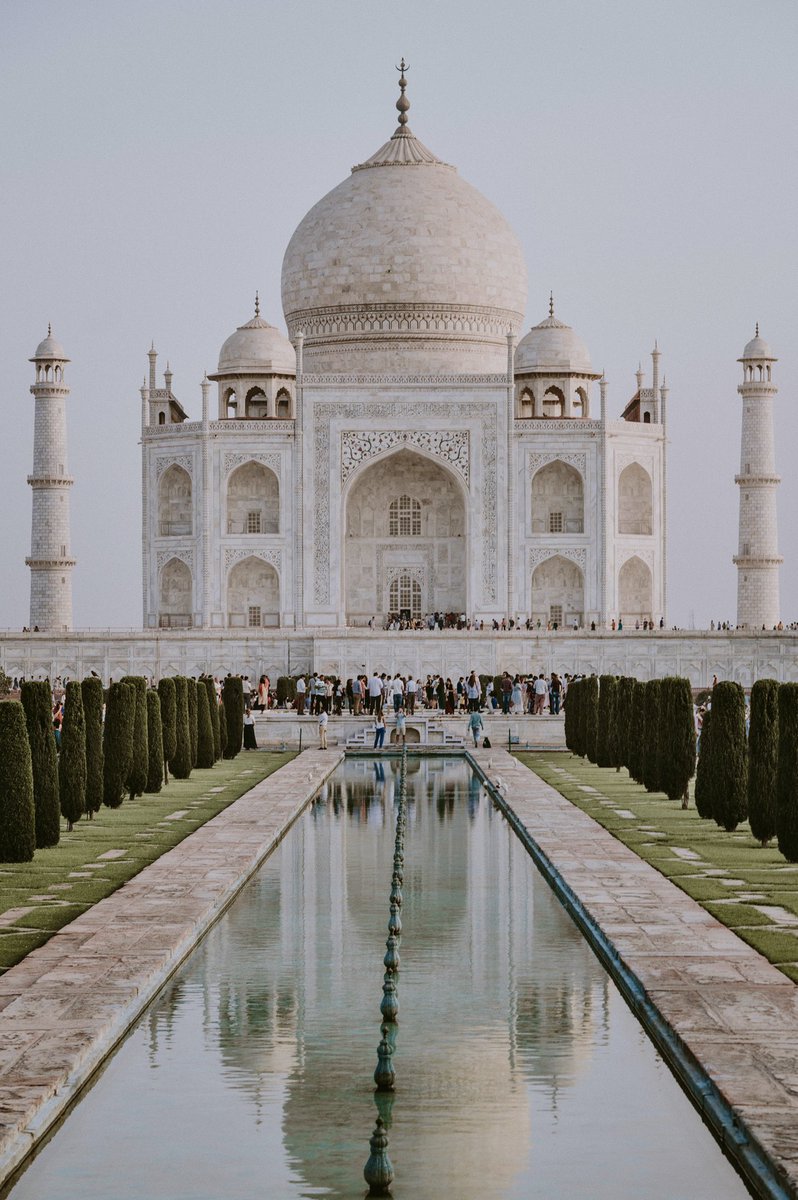
1/ The Taj Mahal was designated as a UNESCO World Heritage Site for being "the jewel of Muslim art in India & one of the universally admired masterpieces of the world's heritage". It is regarded by many as the best example of Mughal architecture
#Tajmahal
#Tajmahal
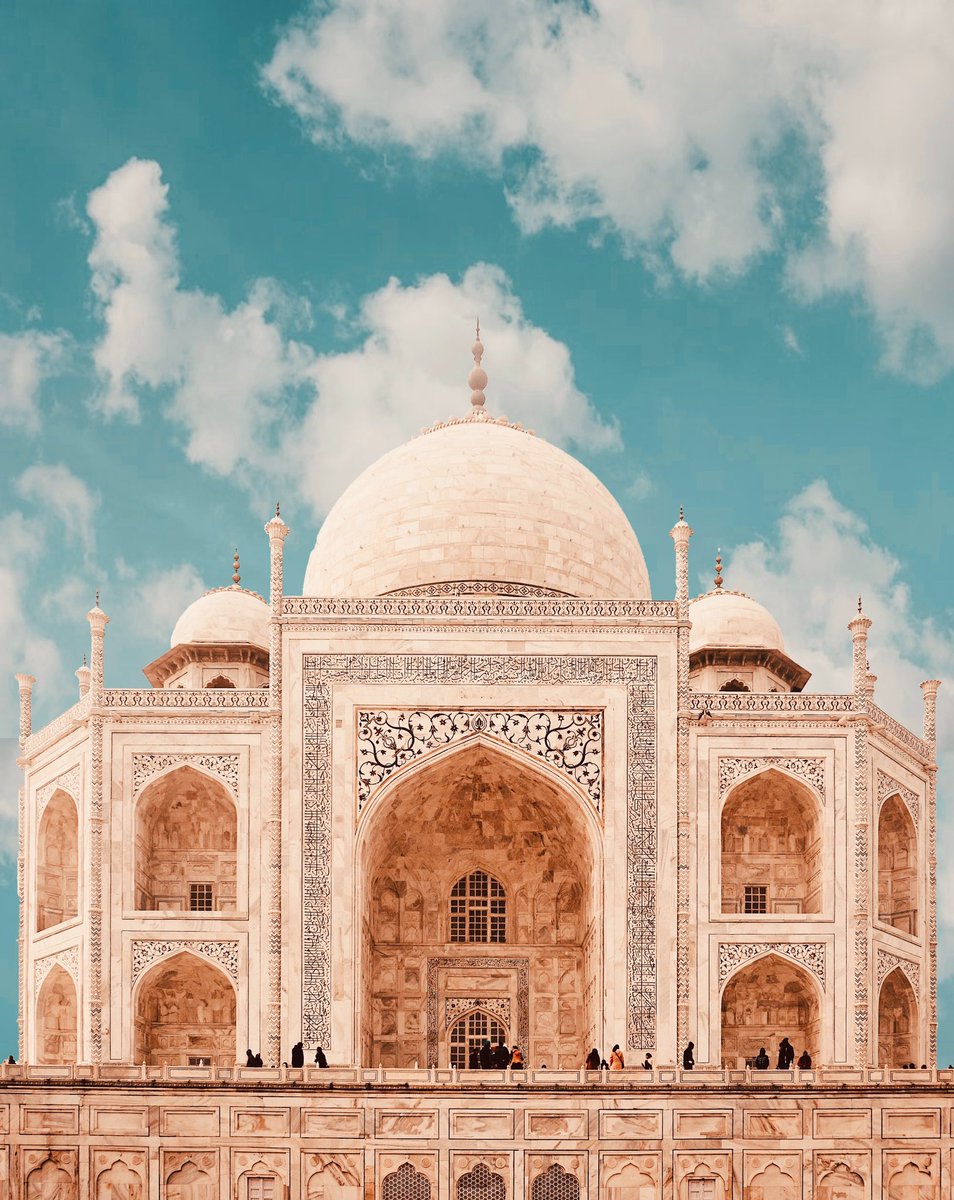
2/ A labour force of about 20,000 workers were recruited to build the Taj Mahal. There was also a creative unit of 37 men employed including sculptors from Bukhara, calligraphers from Syria & Persia, inlayers from southern India & Stone cutters from Baluchistan…
#Tajmahal
#Tajmahal
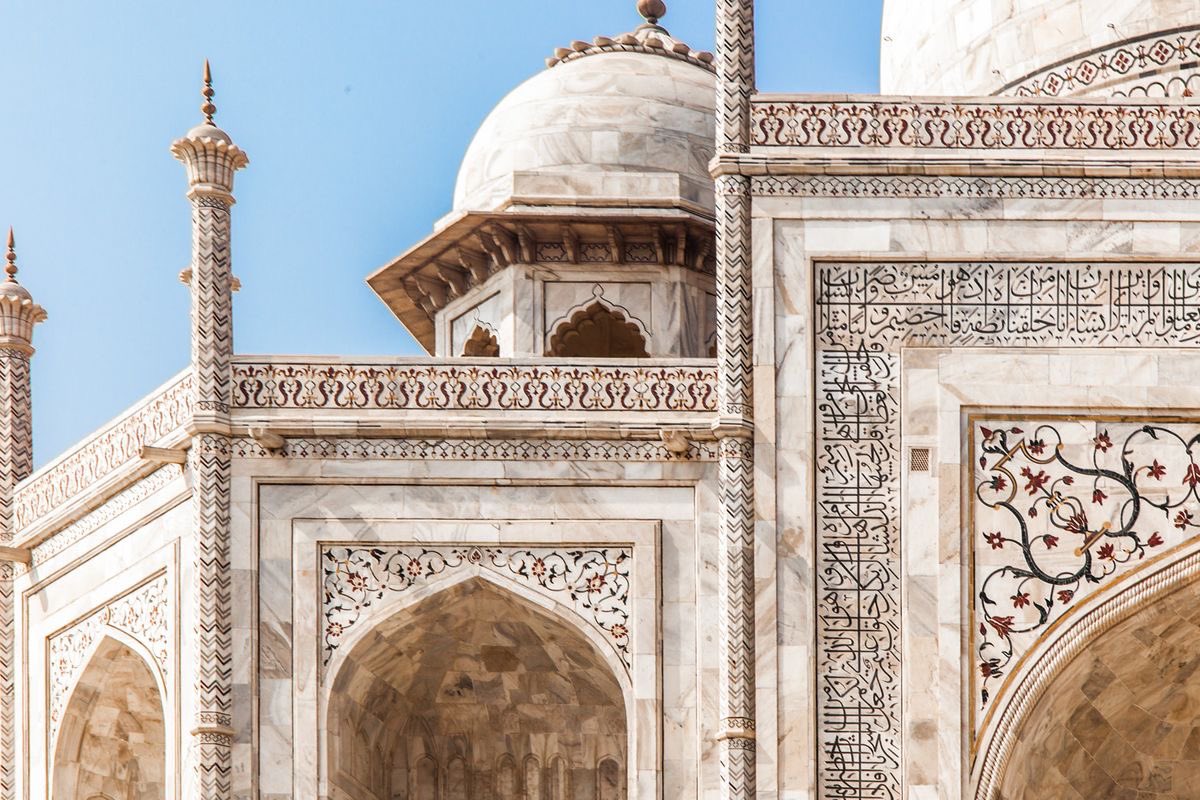
3/ The Taj Mahal appears to change colors depending on available lighting and the time of day — for instance, the monument can appear pink in the morning light, sheer white at noon and a soft golden color after sunset
#Tajmahal

#Tajmahal


4/ The marble dome is the Taj Mahal's most recognizable feature, and makes it a prime example of Islamic architecture. Inside, the dome's vaulted ceilings have a carved, honeycomb pattern. The dome is often called an onion dome because of its bell-like shape
#Tajmahal
#Tajmahal

5/ The Taj Mahal garden is a green carpet to the mausoleum. It is a four by four garden & is popularly known as Charbagh. The garden is a Persian form. It is believed that the Charbagh is the garden of paradise as mentioned in holy Quran
#Tajmahal
#Tajmahal

6/ The architects & craftsmen of the Taj Mahal were masters of proportions & tricks of the eye. When you first approach the main gate that frames the Taj, the monument appears incredibly close and large. But as you get closer, it shrinks in size
#Tajmahal
#Tajmahal
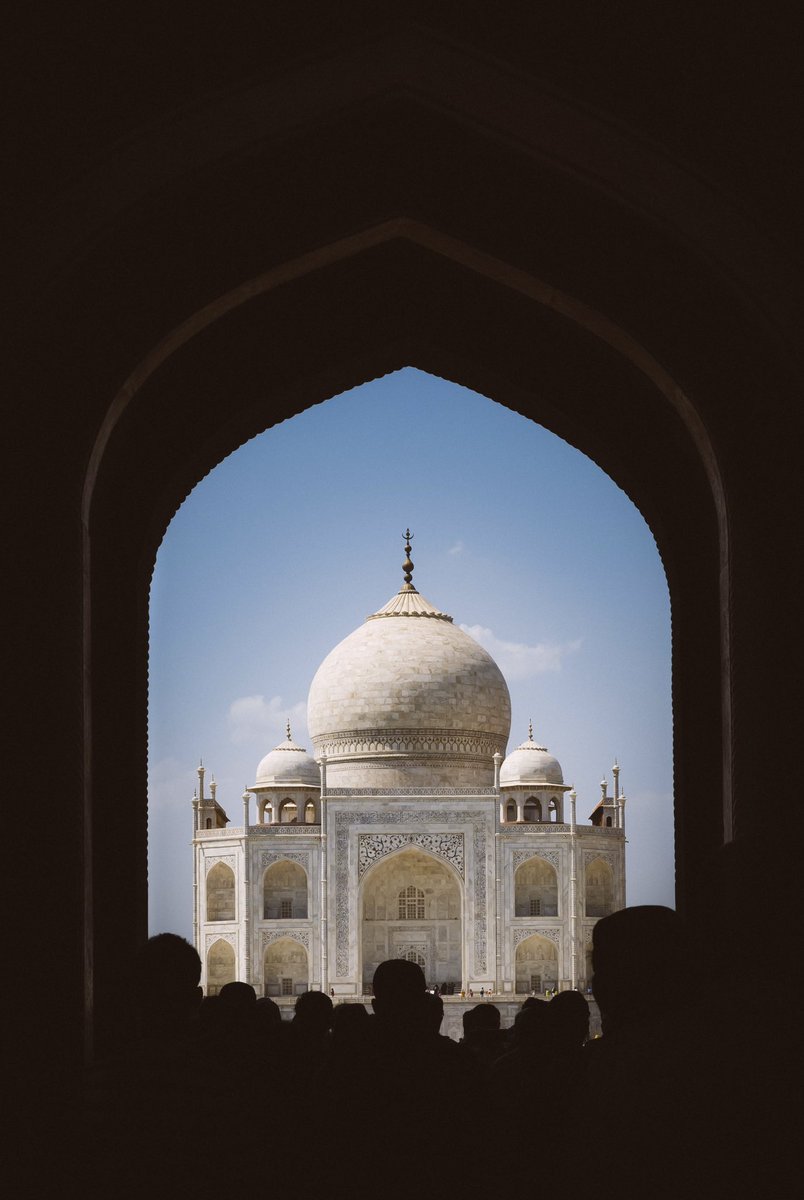
8/ The Taj Mahal welcomes its visitors with an inscription, written on the great gate that reads "O Soul, thou art at rest. Return to the Lord at peace with Him, and He at peace with you." Abdul Haq created this in 1609 & was bestowed with the title of 'Amanat Khan'…
#Tajmahal
#Tajmahal
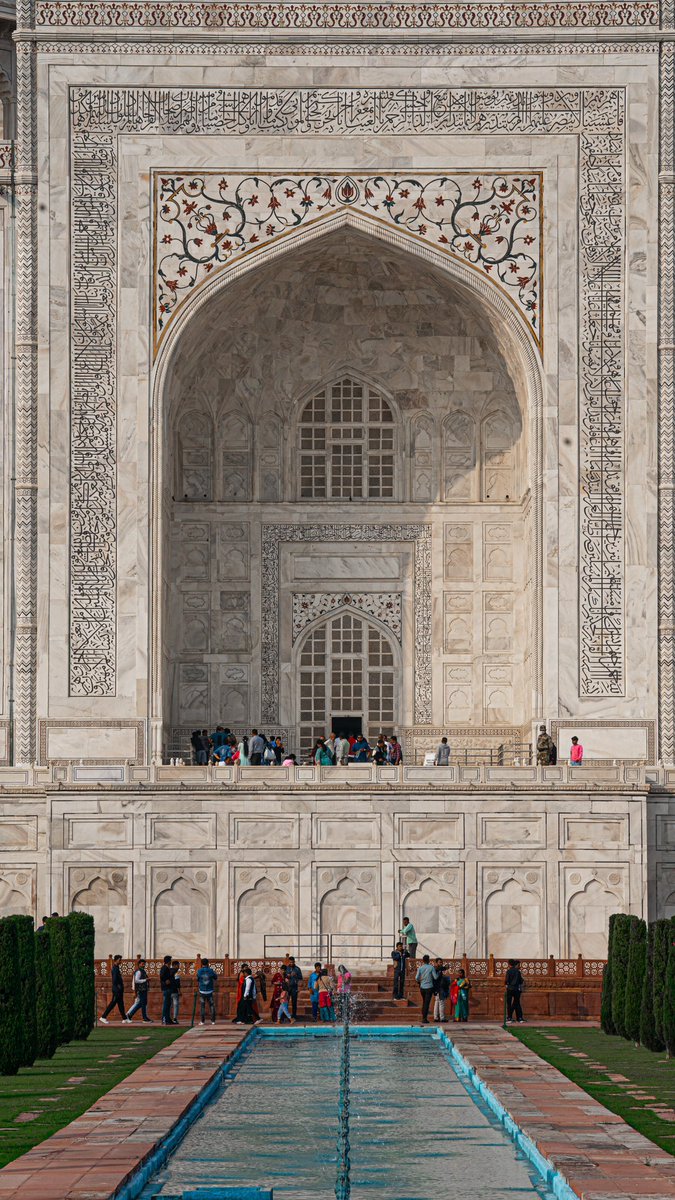
9/ The calligraphy of the Taj Mahal mainly consists of the verses and passages from the Qur’an. It was done by inlaying jasper in the white marble panels & were inscribed by Amanat Khan in an illegible Thuluth script. A number of the panels also bear his signatures
#Tajmahal
#Tajmahal

10/ Inlaid with lapis lazuli, turquoise & malachite, Taj Mahal mosaics are a testament to the beauty as its power to evoke emotion. Known locally as Parchin Kari many who have come to personally see the Taj Mahal have also come to appreciate the detailed craftsmanship
#Tajmahal
#Tajmahal

11/ It is said that the existence of Parchin Kari indicates the presence of Italian craftsmen in the Mughal court due to its similarity with the Roman pietra dura. Parchin Kari is still unique & its development in India is viewed as a milestone when it comes to art
#Tajmahal
#Tajmahal

12/ At the Taj Mahal, the Parchin Kari technique is used most spectacularly to depict well observed blooms and flowering plants
#Tajmahal
#Tajmahal
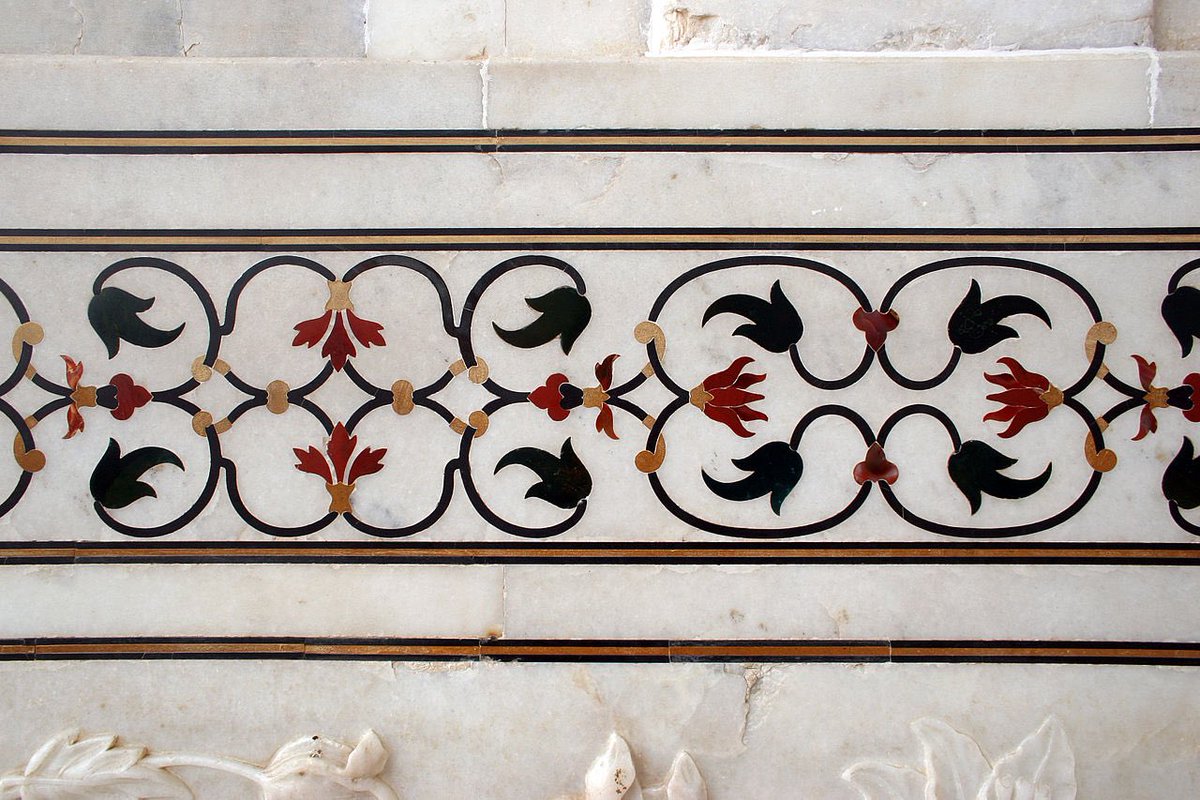
13/ Made with a base of white Makarana Marble, artisans spent time mining the materials, securing the precious stones & crafting the finest details of the mosaics of the Taj Mahal. The Mughal Emperor employed the best inlay workers, giving them a place to live & work
#Tajmahal
#Tajmahal
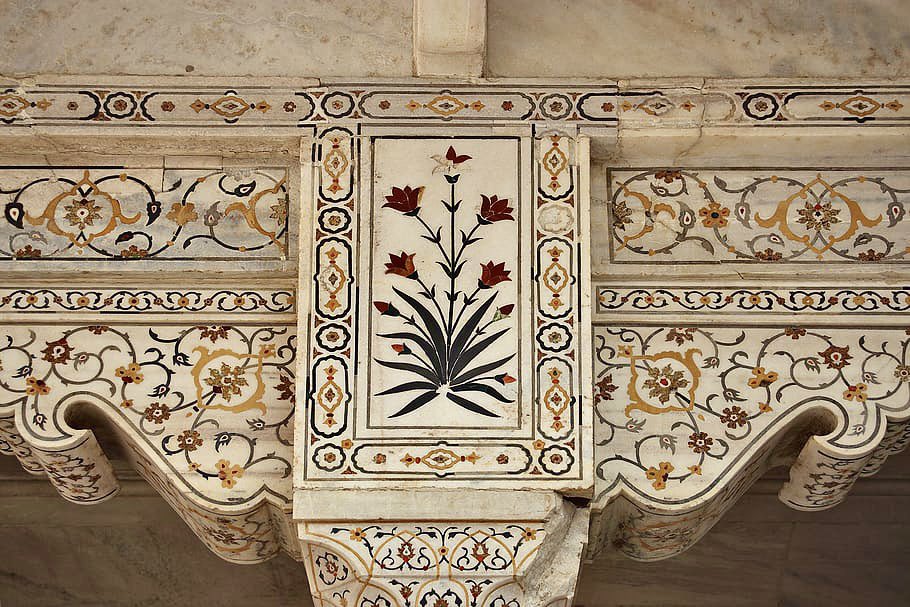
14/ Each mosaic shows precision, elegance, & delicateness, perhaps portraying the Shah’s tender love for his fragile queen. The polished stones and the meticulous handiwork are able to accent the entire structure, adding beauty without being overly complex
#Tajmahal
#Tajmahal

15/ The dazzling engravings on the walls of the Taj Mahal are amazing intricate designs that speak for itself. The marbles that were used to build the Taj Mahal were originally from Makrana, Rajasthan
#Tajmahal
#Tajmahal

17/ Since it’s creation, the Taj Mahal has become a source of inspiration for artists
This is a stunning painting of the Taj Mahal by Russian Painter Vasily Vasilyevich Vereshchagin. Painted in the 1870s.
#Tajmahal
This is a stunning painting of the Taj Mahal by Russian Painter Vasily Vasilyevich Vereshchagin. Painted in the 1870s.
#Tajmahal

18/ Contemporary Islamic artists continue to interpret the Taj Mahal in new ways.
This exquisite miniature painting is by British artist Mobeen Akhtar, you can find out more about her work and creative practice here:
baytalfann.com/post/preservin…
#Tajmahal
This exquisite miniature painting is by British artist Mobeen Akhtar, you can find out more about her work and creative practice here:
baytalfann.com/post/preservin…
#Tajmahal

• • •
Missing some Tweet in this thread? You can try to
force a refresh

